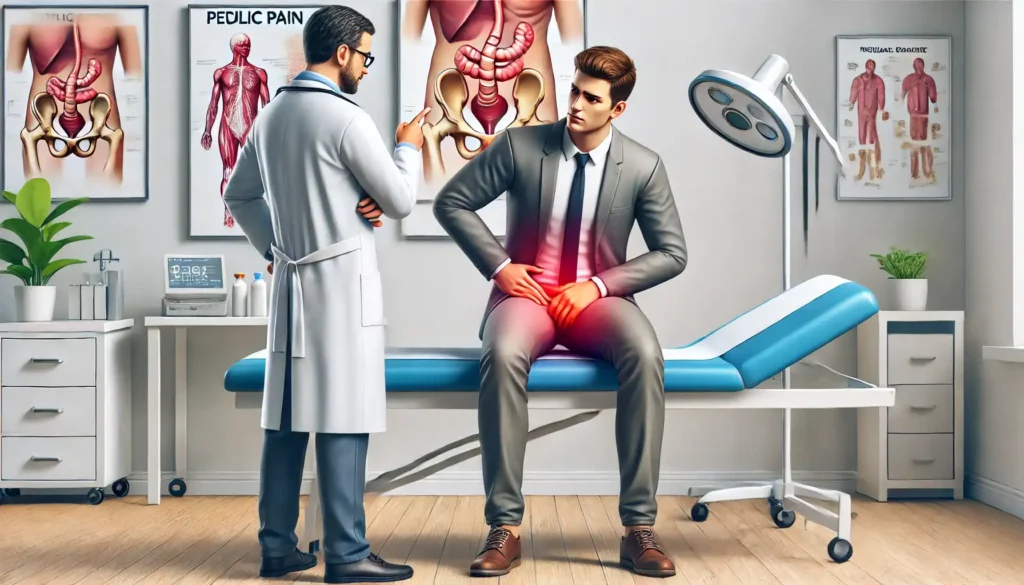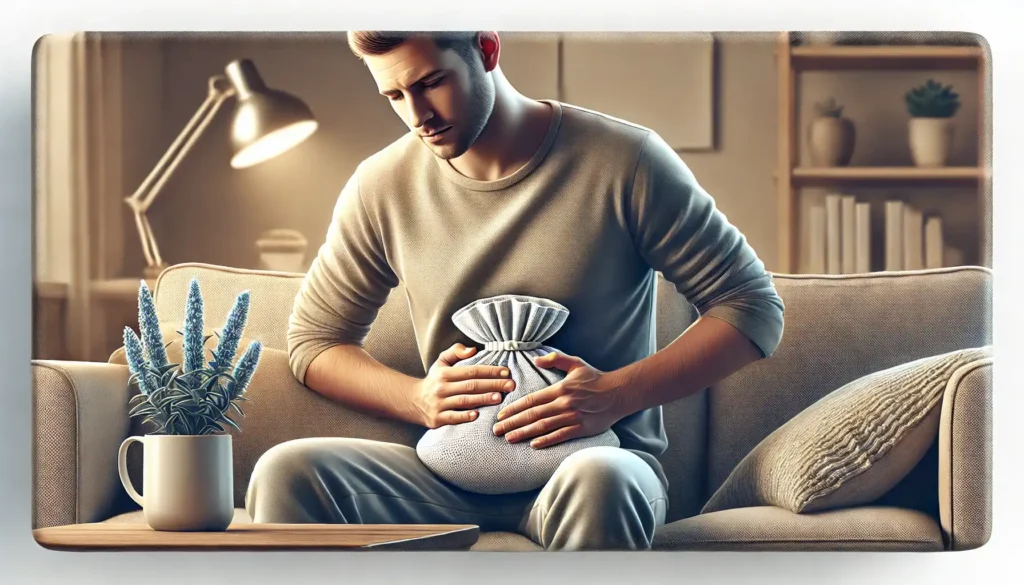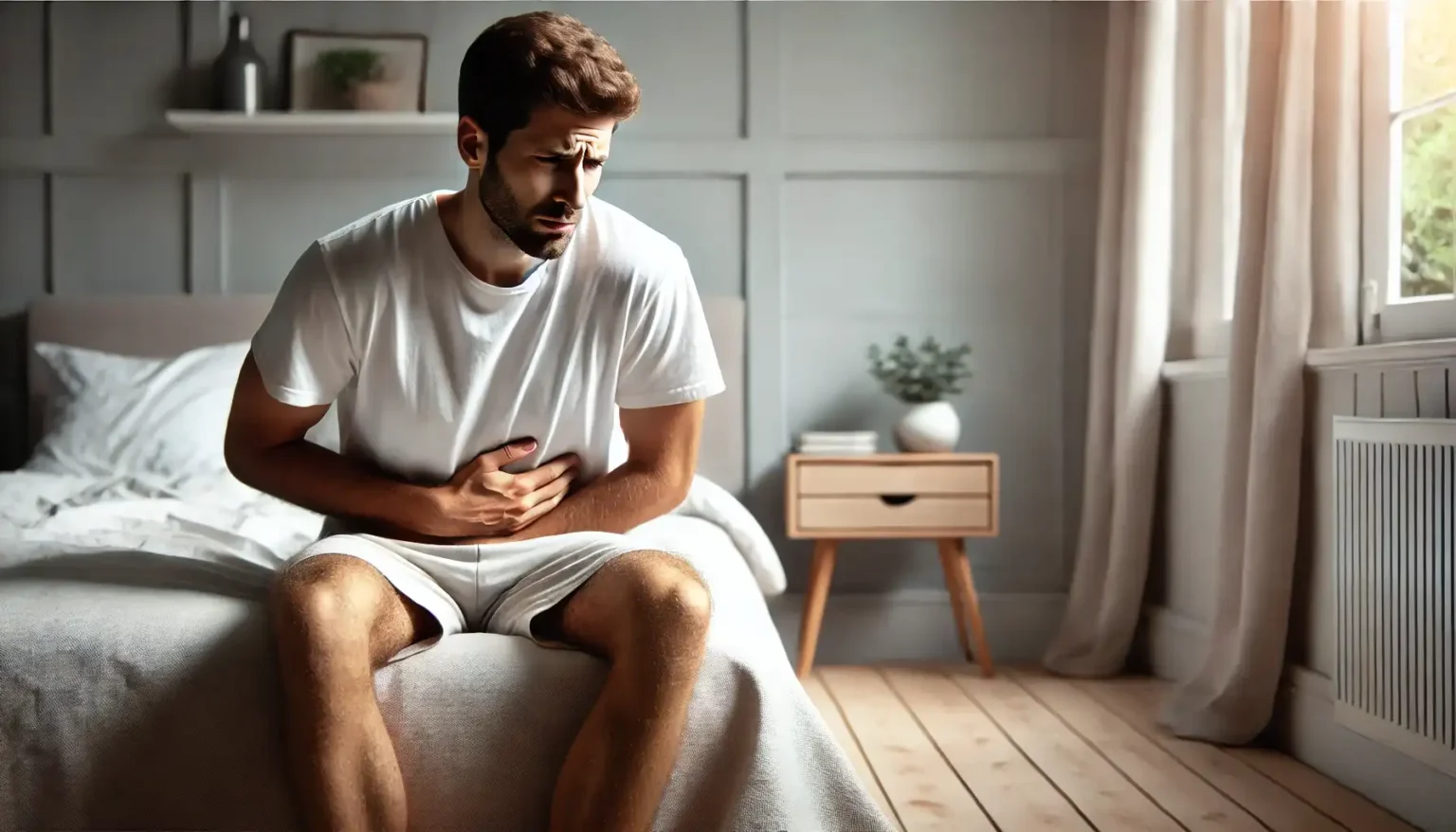Experiencing pelvic pain or discomfort after ejaculation can be alarming. Many men describe this as “sperm cramps” — an informal term for a range of sensations that might involve aching, cramping, or sharp pain in the lower abdomen, groin, or testicular area. Though sperm cramps can often be harmless and temporary, they can also signal underlying health conditions that require medical attention.
In this article, we’ll explore what sperm cramps are, the possible causes, symptoms to watch for, treatment options, and when you should see a doctor.
In this article, you will learn:
- What sperm cramps are and how they feel
- The common causes behind sperm cramps
- Effective ways to treat and prevent sperm cramps
Let’s dive into the details.
What Are Sperm Cramps?
Understanding Sperm Cramps
“Sperm cramps” is not a medically recognized term, but it is commonly used to describe discomfort or pain associated with ejaculation or semen production. This pain typically occurs in the lower abdomen, pelvic region, groin, or testicles. The discomfort can manifest in different ways, ranging from a mild, dull ache to more intense, sharp, or throbbing sensations.
How Sperm Cramps Feel
The way sperm cramps are experienced can differ from person to person. Some common descriptions of these sensations include:
- A dull, throbbing ache in the lower abdomen or groin
- Sharp, shooting pain that occurs during or after ejaculation
- Muscle cramps or spasms in the pelvic region
- Persistent discomfort that may linger for a few minutes or up to several hours
While mild, occasional discomfort is generally not a cause for concern, persistent or severe pain may indicate an underlying issue that warrants medical attention. Understanding the nature of these cramps and recognizing when they become problematic is key to maintaining your reproductive and overall health.rants medical evaluation.
Common Causes of Sperm Cramps
Sperm cramps can result from a variety of factors and medical conditions. Understanding these causes can help you identify when the discomfort is normal and when it’s time to seek professional help.
1. Prostate Issues
Prostatitis (Inflammation of the Prostate)
Prostatitis is the inflammation of the prostate gland and is a frequent cause of pelvic pain and sperm cramps. This condition can be either acute (sudden onset) or chronic (long-lasting).
- Symptoms:
- Pain during or after ejaculation
- Difficulty urinating
- Pelvic or lower back pain
Benign Prostatic Hyperplasia (BPH)
BPH refers to an enlarged prostate gland, a condition that commonly affects older men. It can lead to urinary difficulties and discomfort during ejaculation.
- Symptoms:
- Frequent need to urinate
- Weak or interrupted urine flow
- Painful ejaculation
2. Pelvic Floor Muscle Tension
The pelvic floor muscles support the bladder, intestines, and reproductive organs. Factors like stress, anxiety, or poor posture can cause these muscles to tighten, resulting in cramps during ejaculation.
- Symptoms:
- Aching or cramping in the pelvic region
- Pain during sexual activity or bowel movements
3. Epididymitis
Epididymitis is the inflammation of the epididymis, the coiled tube behind the testicles where sperm matures. This condition is typically caused by bacterial infections, including sexually transmitted infections (STIs).
- Symptoms:
- Swollen or tender testicles
- Pain during ejaculation or urination
- Fever, chills, or general malaise
4. Seminal Vesiculitis
Seminal vesiculitis is the inflammation of the seminal vesicles, the glands that produce seminal fluid. This condition can lead to pain during ejaculation and in the lower abdomen.
- Symptoms:
- Pain in the lower abdomen or pelvis
- Blood in semen (hematospermia)
- Painful ejaculation
5. Testicular Issues
Varicocele
A varicocele is an enlargement of the veins within the scrotum, similar to varicose veins. This can cause testicular discomfort, especially during ejaculation.
- Symptoms:
- Dull, aching pain in the scrotum
- Swelling or a “bag of worms” sensation in the testicles
Testicular Torsion
Testicular torsion occurs when the spermatic cord twists, cutting off blood supply to the testicle. This is a medical emergency requiring immediate attention.
- Symptoms:
- Sudden, severe testicular pain
- Swelling in the scrotum
- Nausea and vomiting
6. Retrograde Ejaculation
In retrograde ejaculation, semen flows backward into the bladder instead of exiting through the urethra during ejaculation. This can cause cramping or a sensation of incomplete release.
- Symptoms:
- Little to no semen during ejaculation
- Cloudy urine after sex
- Pelvic discomfort or mild cramps
7. Sexually Transmitted Infections (STIs)
Certain STIs, such as chlamydia, gonorrhea, and trichomoniasis, can cause inflammation and pain during ejaculation. Prompt treatment is essential to prevent complications.
- Symptoms:
- Burning sensation during urination
- Discharge from the penis
- Swollen or tender testicles
When to Seek Help
If you experience persistent, severe, or worsening sperm cramps, consult a healthcare professional for diagnosis and treatment. Identifying the cause early can help you avoid complications and improve your overall health.
Symptoms That May Accompany Sperm Cramps
Sperm cramps can manifest alongside various other symptoms, which may provide clues about the underlying cause. Recognizing these symptoms is crucial for identifying whether the condition is mild or indicative of a more serious medical issue. Understanding the difference between common and severe symptoms can guide you in deciding when to seek medical attention.
Common Symptoms
These symptoms often accompany sperm cramps and can indicate less serious but still noteworthy conditions like muscle tension, minor infections, or inflammation. Although these symptoms might not be immediately dangerous, they should still be evaluated by a healthcare provider if they persist.
1. Pain During or After Ejaculation
- Description:
- A sharp, burning, or throbbing pain that occurs as ejaculation begins or lingers afterward.
- Possible Causes:
- Prostatitis, pelvic floor muscle tension, or inflammation of the seminal vesicles.
- Retrograde ejaculation or minor infections.
2. Swelling or Tenderness in the Testicles or Groin
- Description:
- The testicles or groin area may feel enlarged, sensitive to touch, or warm.
- Swelling may be accompanied by a dull, constant ache.
- Possible Causes:
- Epididymitis, varicocele, or testicular trauma.
- Infections, including sexually transmitted infections (STIs).
3. Lower Abdominal or Pelvic Discomfort
- Description:
- A persistent ache or pressure in the lower abdomen or pelvic region.
- Discomfort that worsens when sitting, during bowel movements, or after sexual activity.
- Possible Causes:
- Pelvic floor muscle tension, prostatitis, or inflammation of the reproductive organs.
- Seminal vesiculitis or minor urinary tract infections (UTIs).
Severe Symptoms
These symptoms can signal a more serious medical condition that requires immediate attention. If you experience any of these, seek medical care as soon as possible to prevent complications.
1. Blood in Semen (Hematospermia)
- Description:
- Semen that appears pink, red, or brown due to the presence of blood.
- Blood may be visible once or recur over multiple ejaculations.
- Possible Causes:
- Prostate inflammation, seminal vesiculitis, or infections.
- In rare cases, blood in semen may indicate cancer or severe trauma to the reproductive organs.
2. High Fever or Chills
- Description:
- A body temperature exceeding 101°F (38.3°C), often accompanied by shivering, sweating, and a feeling of coldness.
- Possible Causes:
- A sign of a systemic infection such as acute bacterial prostatitis or epididymitis.
- May indicate that the infection is spreading and requires urgent antibiotic treatment.
3. Difficulty Urinating
- Description:
- A weak urine stream, pain or burning during urination, or a feeling of incomplete emptying.
- In some cases, an inability to urinate (urinary retention).
- Possible Causes:
- Prostate enlargement (BPH), prostatitis, or urethral obstruction.
- Advanced infections affecting the urinary tract or bladder.

4. Severe or Sudden Pain
- Description:
- Intense, sharp, or stabbing pain in the groin, testicles, or lower abdomen that comes on suddenly.
- Pain may be accompanied by nausea, vomiting, or swelling.
- Possible Causes:
- Testicular torsion, which is a medical emergency requiring immediate intervention to save the testicle.
- Severe infections or trauma to the reproductive organs.
When to Seek Immediate Medical Attention
If you experience any of the following symptoms along with sperm cramps, it’s essential to seek immediate medical care:
- Persistent high fever or chills
- Blood in semen or urine
- Difficulty or inability to urinate
- Severe or sudden testicular pain
- Swelling that worsens rapidly
These symptoms can indicate serious conditions such as testicular torsion, severe infections, or systemic inflammation that require prompt diagnosis and treatment to prevent long-term complications., seek medical attention immediately.
When to See a Doctor

Persistent or severe sperm cramps should not be ignored. Seek medical advice if you experience:
- Pain that lasts for more than a few days
- Swelling or redness in the testicles or groin
- Difficulty urinating
- High fever or chills
- Blood in semen or urine
Early diagnosis can help prevent complications and ensure proper treatment.
Diagnosis of Sperm Cramps
Accurately diagnosing the cause of sperm cramps is essential for effective treatment and the prevention of complications. Because sperm cramps can be linked to various underlying conditions, your healthcare provider will typically employ a combination of diagnostic methods to identify the exact cause. Here’s a detailed look at the steps and procedures involved in diagnosing sperm cramps.
1. Comprehensive Medical History
Before performing any physical tests, your healthcare provider will begin by collecting a detailed medical history. This helps identify patterns, potential risk factors, and underlying issues.
Questions Your Doctor May Ask:
- Nature of the Pain:
- When did the pain start? Is it constant or intermittent?
- Is the pain dull, sharp, or throbbing?
- Triggers and Timing:
- Does the pain occur during or after ejaculation?
- Do certain activities, such as exercise or prolonged sitting, worsen the discomfort?
- Associated Symptoms:
- Have you experienced swelling, fever, urinary issues, or blood in your semen?
- Medical and Sexual History:
- Have you had any recent infections, injuries, or surgeries?
- Are you sexually active, and do you use protection?
This information helps narrow down potential causes, such as infections, muscle tension, or prostate issues.
2. Physical Examination
A thorough physical examination is one of the first steps in diagnosing sperm cramps. The healthcare provider will check for:
- Tenderness or Swelling:
- Gentle palpation of the testicles, scrotum, lower abdomen, and groin to identify areas of pain, inflammation, or lumps.
- Abnormalities in the Genital Area:
- Checking for signs of infections, rashes, or lesions.
- Prostate Health Assessment:
- A digital rectal exam (DRE) may be performed to assess the size, shape, and tenderness of the prostate gland. This can help detect conditions like prostatitis or benign prostatic hyperplasia (BPH).
What to Expect:
- The exam may cause mild discomfort, especially if inflammation is present.
- Your doctor will explain each step to ensure you’re comfortable throughout the process.
3. Urine and Semen Tests
Laboratory analysis of urine and semen samples can help identify infections or inflammation in the reproductive and urinary systems.
Urine Tests:
- Urinalysis: Checks for the presence of bacteria, white blood cells, and blood, indicating urinary tract infections (UTIs) or prostatitis.
- Urine Culture: Determines the specific bacteria causing the infection and identifies appropriate antibiotics.
Semen Analysis:
- Semen Culture: Detects bacterial infections in the prostate, epididymis, or seminal vesicles.
- Analysis of White Blood Cells: A high white blood cell count in semen can indicate infection or inflammation.
Why These Tests Are Important:
- Infections like epididymitis, prostatitis, or STIs are common causes of sperm cramps and need targeted treatment with antibiotics.
4. Imaging Studies
Ultrasound imaging provides detailed pictures of the internal structures of the reproductive and pelvic regions, helping to identify abnormalities that may be causing sperm cramps.
Types of Ultrasound:
- Scrotal Ultrasound:
- Purpose: Examines the testicles, epididymis, and scrotum for issues like varicoceles, testicular torsion, or cysts.
- Procedure: A small handheld device (transducer) is moved over the scrotum, emitting sound waves to create images.
- Transrectal Ultrasound (TRUS):
- Purpose: Provides a detailed view of the prostate gland and seminal vesicles to check for inflammation, enlargement, or blockages.
- Procedure: The transducer is inserted gently into the rectum to capture images of the prostate.
What to Expect:
- Ultrasound procedures are non-invasive and painless.
- Results are typically available quickly, allowing for timely diagnosis and treatment planning.
5. Blood Tests
Blood tests help identify systemic infections, inflammation, or other underlying conditions that may be contributing to sperm cramps.
Common Blood Tests:
- Complete Blood Count (CBC):
- Purpose: Measures white blood cell count to detect infections or inflammation.
- C-Reactive Protein (CRP) and Erythrocyte Sedimentation Rate (ESR):
- Purpose: Identify markers of inflammation in the body.
- Prostate-Specific Antigen (PSA):
- Purpose: Elevated PSA levels can indicate prostatitis, BPH, or prostate cancer.
Why Blood Tests Matter:
- These tests can help diagnose conditions like prostatitis, systemic infections, or autoimmune disorders that might not be evident through physical examination alone.
6. Additional Diagnostic Procedures
In some cases, your doctor may recommend specialized tests to rule out specific conditions:
- MRI or CT Scan:
- Provides more detailed images of the pelvic region if an ultrasound is inconclusive.
- Cystoscopy:
- A procedure where a thin tube with a camera is inserted into the urethra to examine the bladder and urethra for abnormalities.
Summary of Diagnostic Process
- Medical History Review: Detailed discussion of symptoms and potential risk factors.
- Physical Examination: Checking for tenderness, swelling, and abnormalities.
- Urine and Semen Tests: Identifying infections or inflammation.
- Imaging Studies: Ultrasound for a detailed view of internal structures.
- Blood Tests: Detecting systemic infections or inflammation.
- Specialized Tests: Further evaluation if needed.
Why Early Diagnosis Matters
Prompt and accurate diagnosis of sperm cramps is crucial for several reasons:
- Targeted Treatment: Identifying the exact cause ensures you receive the appropriate care, such as antibiotics for infections or physical therapy for muscle tension.
- Preventing Complications: Conditions like testicular torsion, prostatitis, or infections can lead to severe complications if left untreated.
- Peace of Mind: Understanding the cause of your discomfort can alleviate anxiety and help you manage your health more effectively.
If you’re experiencing persistent or severe sperm cramps, don’t hesitate to seek medical advice. Early intervention can make a significant difference in your health and well-being.
Treatment Options for Sperm Cramps
Effectively treating sperm cramps involves a combination of medical treatments, at-home remedies, and, in some cases, specialized therapies. The appropriate treatment depends on the underlying cause, so a proper diagnosis from a healthcare provider is essential. Here’s a comprehensive guide to the treatment options and preventive measures for sperm cramps.
Medical Treatments
Medical interventions are necessary when sperm cramps are caused by bacterial infections, prostate issues, or other underlying medical conditions. Here are the primary medical treatments used:
1. Antibiotics
Antibiotics are prescribed to treat bacterial infections such as prostatitis, epididymitis, or sexually transmitted infections (STIs) like chlamydia and gonorrhea.
- Common Antibiotics:
- Ciprofloxacin for prostatitis.
- Doxycycline for epididymitis and certain STIs.
- Duration of Treatment:
- Typically lasts between 1 to 4 weeks, depending on the severity of the infection.
- Considerations:
- Always complete the full course of antibiotics as prescribed, even if symptoms improve early.
- Inform your doctor of any allergies to medications.
2. Anti-inflammatory Medications
Nonsteroidal anti-inflammatory drugs (NSAIDs) like ibuprofen (Advil) or naproxen (Aleve) help reduce pain, inflammation, and swelling associated with sperm cramps.
- Benefits:
- Provides quick relief for mild to moderate pain.
- Reduces inflammation in the prostate, epididymis, and surrounding tissues.
- Usage Tips:
- Take with food to avoid stomach irritation.
- Do not exceed the recommended dosage without consulting a healthcare provider.
3. Alpha Blockers
Alpha blockers like tamsulosin (Flomax) are used to treat prostate issues such as benign prostatic hyperplasia (BPH) and prostatitis. They work by relaxing the muscles in the prostate and bladder neck, improving urine flow and reducing discomfort.
- Benefits:
- Eases urinary symptoms and reduces pelvic pain.
- Helps alleviate pain during ejaculation.
- Side Effects:
- Dizziness, fatigue, or decreased blood pressure.
- Consult your doctor if side effects are bothersome.

At-Home Remedies
In addition to medical treatments, several at-home remedies can help alleviate sperm cramps and provide relief from discomfort. These methods are effective for managing mild to moderate symptoms.
1. Warm Compresses
Applying a warm compress or heating pad to the lower abdomen, groin, or pelvic area can help relax tense muscles and reduce pain.
- How to Use:
- Apply for 15-20 minutes at a time, several times a day.
- Ensure the compress is warm, not hot, to avoid burns.
- Benefits:
- Relieves muscle tension and cramping.
- Increases blood flow to the area, promoting healing.
2. Gentle Exercise and Stretching
Light physical activity and stretching exercises can help relieve pelvic floor tension and improve circulation.
- Recommended Exercises:
- Pelvic Tilts: Lie on your back with knees bent, gently tilt your pelvis upward.
- Knee-to-Chest Stretch: Lie on your back and pull one knee toward your chest, holding for 20-30 seconds.
- Benefits:
- Reduces muscle tightness and spasms.
- Promotes relaxation and flexibility in the pelvic region.
3. Hydration
Drinking plenty of water helps flush out toxins and bacteria, particularly if an infection is present.
- Tips:
- Aim for at least 8-10 glasses of water per day.
- Limit caffeine and alcohol, as they can irritate the urinary tract.
- Benefits:
- Supports kidney and bladder health.
- Reduces the risk of urinary tract infections (UTIs).
Pelvic Floor Therapy
Pelvic floor dysfunction is a common cause of sperm cramps. Working with a pelvic floor physical therapist can provide targeted relief.
What is Pelvic Floor Therapy?
- A specialized form of physical therapy focusing on the muscles, ligaments, and connective tissues of the pelvic floor.
- Involves exercises, stretches, and relaxation techniques to reduce muscle tension.
What to Expect During Therapy:
- Assessment: The therapist evaluates pelvic muscle strength, coordination, and tension.
- Techniques:
- Manual Therapy: Massage and gentle pressure to release tight muscles.
- Biofeedback: Devices that help you learn to control pelvic muscles.
- Exercises: Tailored stretches and strengthening routines.
Benefits:
- Reduces chronic pelvic pain and sperm cramps.
- Improves muscle control and flexibility.
- Alleviates discomfort during and after ejaculation.
How to Prevent Sperm Cramps
Preventive measures can help reduce the likelihood of experiencing sperm cramps and improve overall reproductive health. Here are effective strategies:
1. Practice Good Hygiene
- Wash the genital area daily with warm water and mild soap.
- Avoid using harsh soaps or irritants that can lead to infections.
2. Safe Sex Practices
- Use condoms during sexual activity to prevent sexually transmitted infections (STIs).
- Get regular STI screenings, especially if you have multiple partners.
- Promptly treat any diagnosed infections to prevent complications.
3. Manage Stress
- High stress and anxiety can lead to pelvic floor tension, contributing to sperm cramps.
- Relaxation Techniques:
- Deep Breathing: Practice slow, deep breaths to calm the body.
- Meditation: Spend 10-15 minutes daily on mindfulness or guided meditation.
- Yoga: Incorporate gentle yoga stretches to reduce muscle tightness.
4. Regular Check-ups
- Schedule routine visits to a healthcare provider for prostate and testicular health exams.
- Early detection of issues like prostatitis, BPH, or testicular abnormalities can prevent sperm cramps.
- Perform monthly testicular self-exams to detect any unusual lumps or changes.
Conclusion
Sperm cramps can range from mild discomfort to severe pain, and while they are often manageable, they can sometimes signal a more serious condition. Understanding the causes and knowing when to seek medical help is crucial. By maintaining good health practices and addressing symptoms early, you can prevent complications and maintain your well-being.

